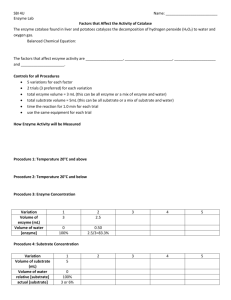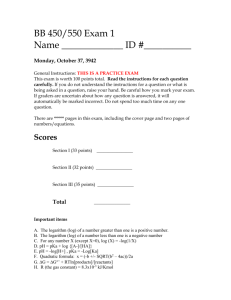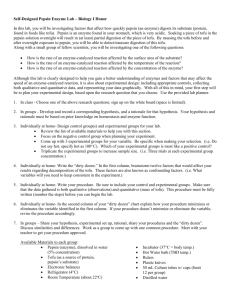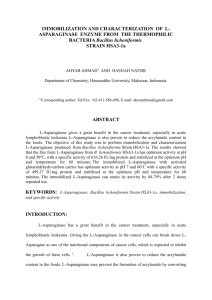Factor Affecting Enzymes
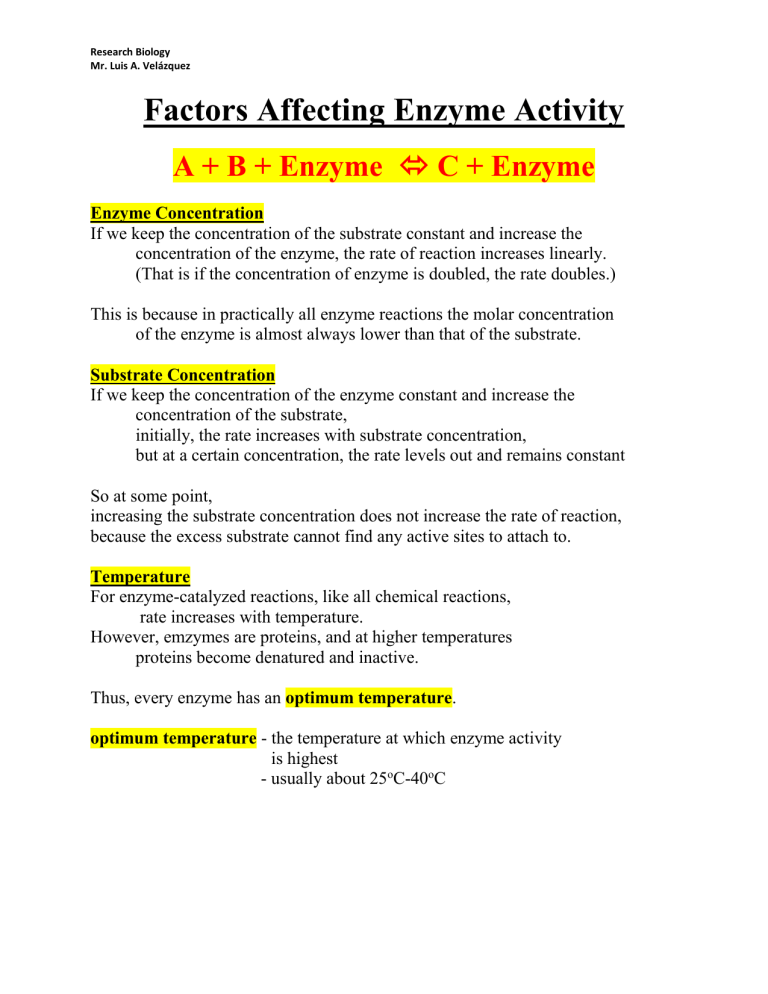
Research Biology
Mr. Luis A. Velázquez
Factors Affecting Enzyme Activity
A + B + Enzyme
C + Enzyme
Enzyme Concentration
If we keep the concentration of the substrate constant and increase the concentration of the enzyme, the rate of reaction increases linearly.
(That is if the concentration of enzyme is doubled, the rate doubles.)
This is because in practically all enzyme reactions the molar concentration of the enzyme is almost always lower than that of the substrate.
Substrate Concentration
If we keep the concentration of the enzyme constant and increase the concentration of the substrate, initially, the rate increases with substrate concentration, but at a certain concentration, the rate levels out and remains constant
So at some point, increasing the substrate concentration does not increase the rate of reaction, because the excess substrate cannot find any active sites to attach to.
Temperature
For enzyme-catalyzed reactions, like all chemical reactions,
rate increases with temperature.
However, emzymes are proteins, and at higher temperatures proteins become denatured and inactive.
Thus, every enzyme has an optimum temperature . optimum temperature - the temperature at which enzyme activity is highest
- usually about 25 o C-40 o C
Research Biology
Mr. Luis A. Velázquez
Effect of pH
Small changes in pH can result in enzyme denaturation and loss of catalytic activity.
WHY?
Because the charge on acidic and basic amino acid residues located at the active site depends on pH.
Most enzymes only exhibit maximum activity over a very narrow pH range. optimum pH - is the pH at which an enzyme has maximum activity.
Biological buffers help maintain the optimum pH for an enzyme.
Most enzymes have an optimum pH that falls within the physiological range of 7.0-7.5.
Notable exceptions are the digestive enzymes pepsin and trysin. pepsin (active in the stomach) - optimum pH of 1.5 trypsin (active in the small intestine) - optimum pH of 8.0.
Review:
How do each of the following affect the rate of an enzyme catalyzed reaction? a. increase in enzyme concentration b. increase in substrate concentration c. increase in temperature d. increase in pH



